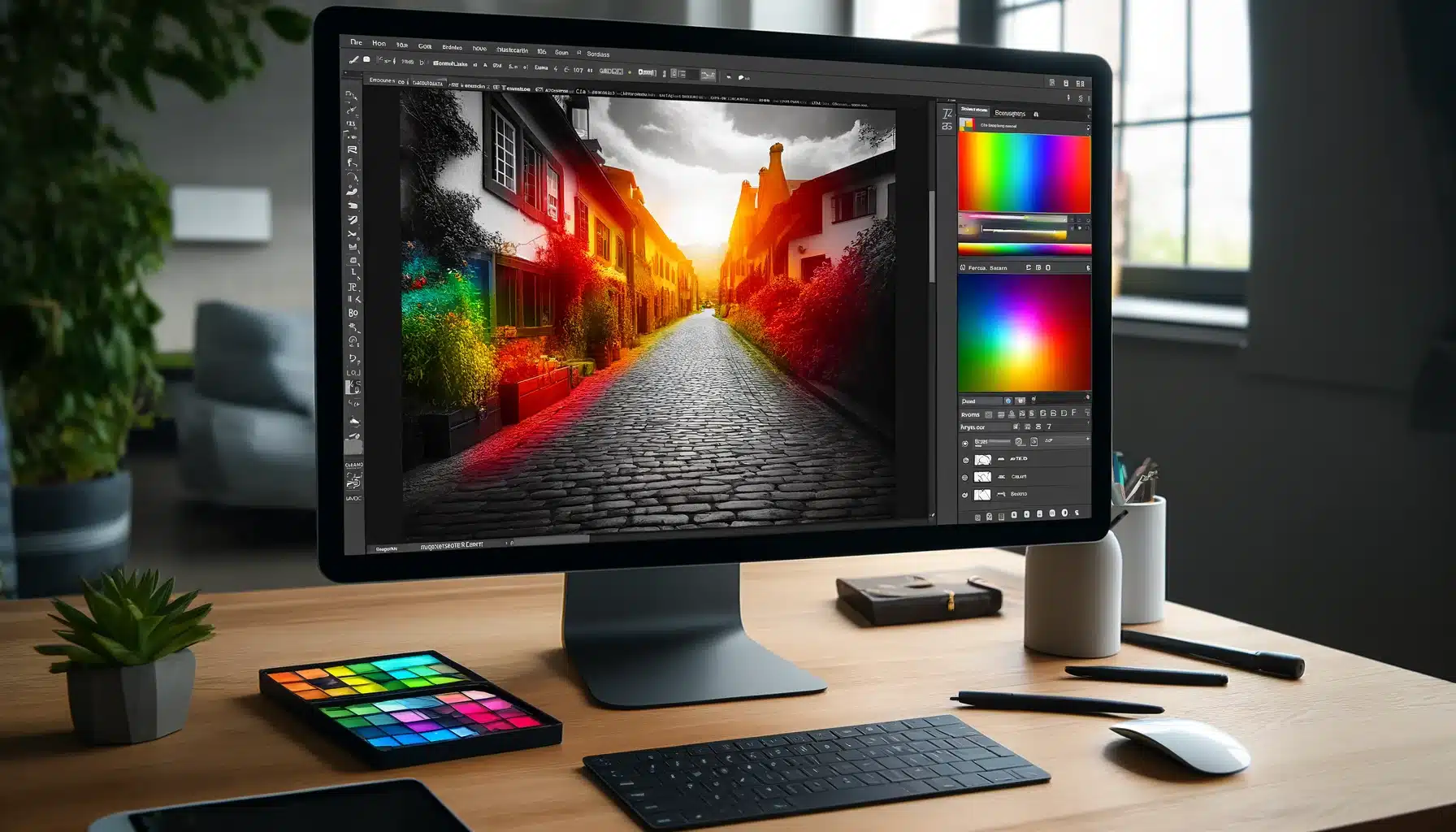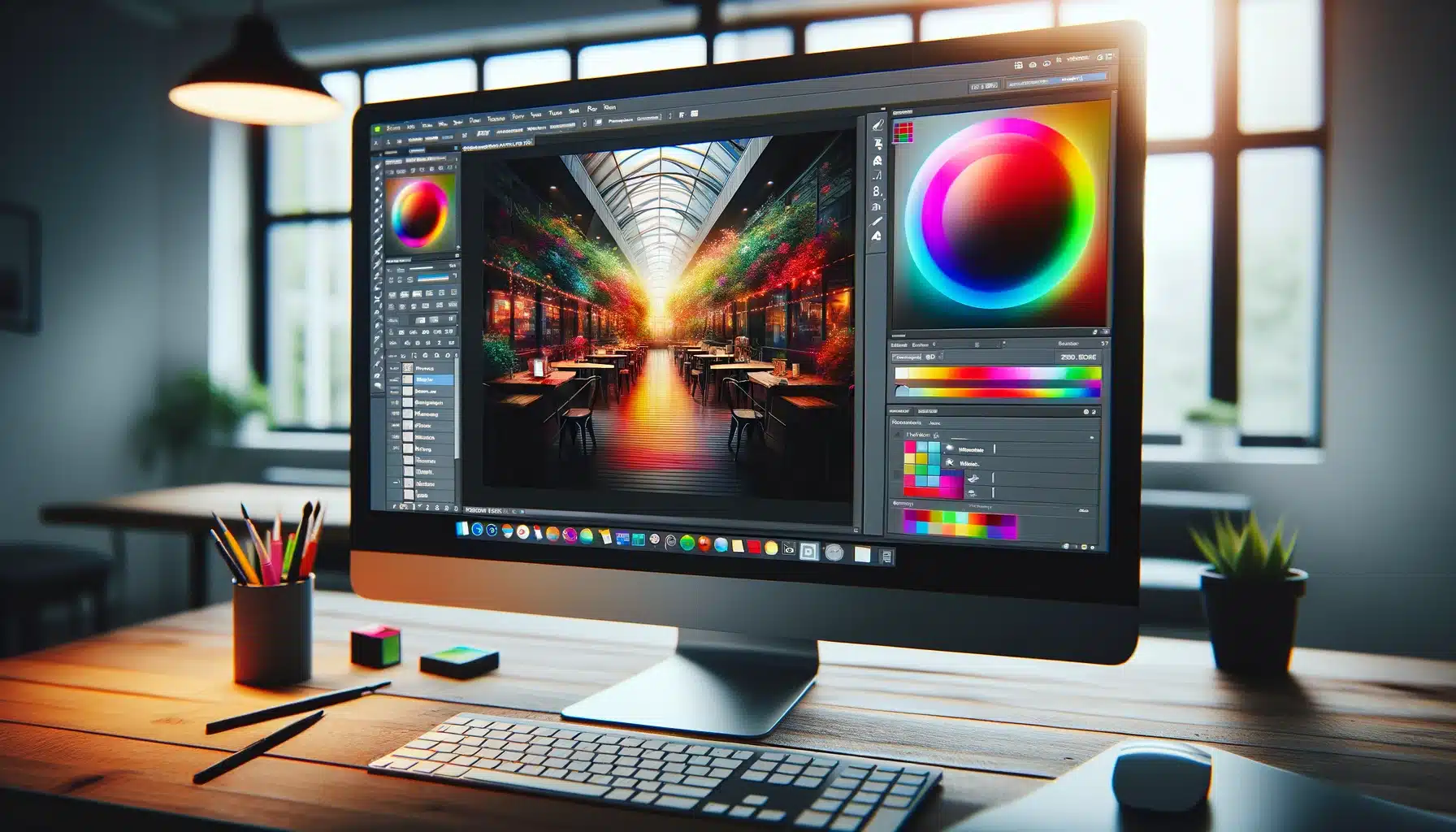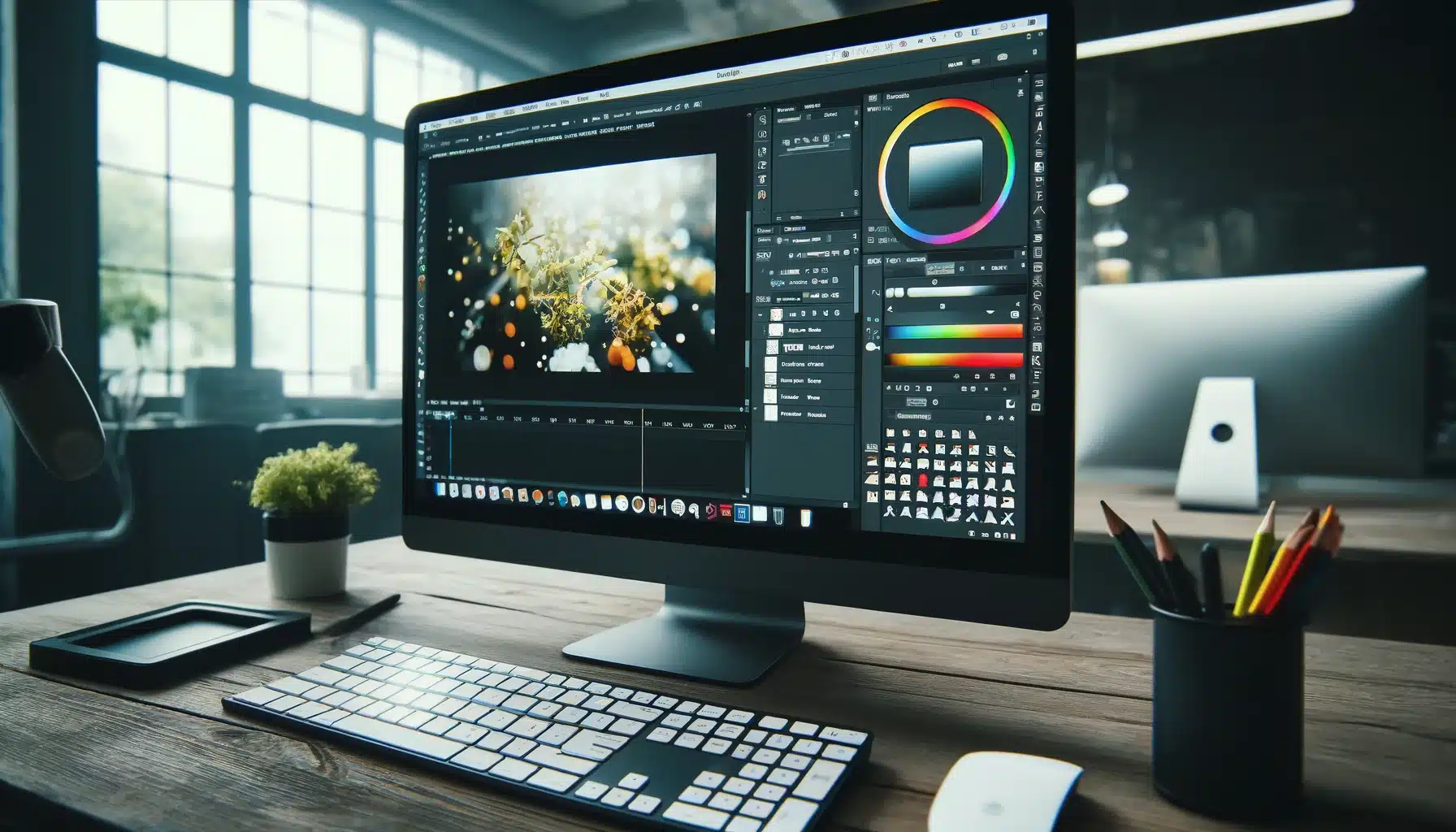
Introduction
Selective color is a powerful tool that allows you to change specific colors in an image without affecting others. This makes it perfect for making precise color corrections or creating unique artistic effects. Whether you want to enhance a certain color or completely change it, learning how to use Selective Color in Photoshop can greatly improve your photo editing skills.
In this article, we will show you step-by-step how to use this tool to transform your photos. You will learn how to create adjustment layers, use layer mask, and even fix specific color issues. We’ve also included comparisons, tables, and practical tips to make your editing process easier and faster.
Table of Contents
What is Selective Color in Photoshop?

Selective Color in Photoshop is a feature that allows you to tweak specific hues in your pictures. This means you can enhance one hue without affecting the others. It’s especially useful for targeted enhancements or corrections.
For instance, if the cloud in your picture appears too gray, you can select the grays and modify the settings to make the clouds look whiter and brighter. This is very useful for photographers and designers who want to create natural-looking or highly artistic effects.
How Selective Color Photoshop Works?
Selective Color works by letting you pick a primary color in your image, like red, yellow, green, cyan, blue, magenta, pure white, neutral (gray), or black. To use it, you need to add an adjustment layer. This layer lets you make changes that you can easily undo or modify later, which is helpful if you want to experiment with different looks. Once you choose a color, you can adjust the amount of Cyan, Magenta, Yellow, and Black (known as CMYK) in that color.
How to Use Selective Color in Photoshop: A Step-by-Step Guide
Learning how to use Selective Color in Photoshop can significantly improve your photo editing skills. This guide walks you through each step to make specific hue adjustments in your photographs. Whether you are using a computer or an iPad, these steps will help you achieve the best results.
Step 1: Open Your Picture
Begin by opening Adobe Photoshop software. Go to the File menu at the top and select Open. Navigate to the picture file you want to edit on your computer or tablet and click Open. Now your picture appears on the workspace ready for the next step.
Step 2: Create a Selective Color Adjustment Layer
Once your image is ready, go to the Layers panel. Click on Layer > New Adjustment Layer > Selective Color from the drop-down menu. This will create a new adjustment layer above your background layer. The benefit of using a separate adjustment layer is that you can always return to it to make more changes without affecting the original image.
Step 3: Select the Color You Want to Edit
Next, open the Selective Color from the properties panel. In the drop-down menu, choose the color you want to edit. You can select from primary colors like Reds, Yellows, Greens, Cyans, Blues, and Magentas, or non-colors like Whites, Neutrals, and Blacks.
Step 4: Adjust the Sliders to Fine Tune
Now that you have picked a hue, you will see four adjustment bars: Cyan, Magenta, Yellow, and Black. These bars help you modify the amount of each color. Moving the sliders to the right increases the chosen color, while moving them to the left reduces it.
For instance, to make a blue sky more vivid, you might increase the Cyan slider. To add contrast, move the black slider slightly to the right. If you’re adjusting skin tones, reduce the magenta slider to remove any unwanted redness.
Step 5: Use Layer Mask for Precision
If you only want to apply the changes to a specific part of the image, use a layer mask. In the layers panel, click the layer mask icon (a white rectangle with a circle). You can use the brush tool to paint over the areas where you want the adjustments. Remember, black hides, and white reveals the effect.
Step 6: Review and Save
Look over your edited picture to make sure it appears the way you want. If you need to make more edits, go back and modify the settings bars again. Once you are satisfied with your work, go to the File menu and select Save As. Choose a new name, JPEG or raw file format, and the files location to save your edited picture.
Keyboard Shortcuts for Selective Color Adjustment in Photoshop

| Action | Shortcut | Description |
|---|---|---|
| Open Layers Panel | F7 | Instantly opens the layers panel. |
| Increase Brush Size | Right Bracket Key ( ] ) | Makes the brush bigger to easily edit larger sections of the selected area. |
| Decrease Brush Size | Left Bracket Key ( [ ) | Reduces the size of brush to work on smaller details or finer areas of your image. |
| Fill with Foreground Color | Backspace or Shift + Backspace | Fills the selected color or new fill layer with the active foreground color. |
| Toggle Through Blend Modes | Shift key + Plus (+) | Cycles through the different blend modes to find the best color effect for your image. |
| Reset to Default Settings | D | Resets the selective color panel to the default setting, perfect for starting adjustments again. |
| Select Entire Top Layer | Alt + . (period) | Selects the entire layer, allowing global adjustments to all colors or effects. |
Advantages of Using Photoshop's Selective Color Tool
Photoshop Selective Color Tool offers many advantages for enhancing your images. Instead of affecting the entire image, this tool focuses on individual colors, giving you more control over your edits. This is very helpful for improving the look and feel of your pictures.
- Precise Adjustments: Selective color lets you make very specific corrections to individual hues in your image. For example, you can brighten a blue sky without changing the green trees or someone's skin tone. This precision helps create a balanced and visually appealing image.
- Non-Destructive Editing: Using adjustment layers allows for non-destructive editing. This means that your original image stays untouched, and you can make changes without losing any information. You can always return to the adjustment layer and modify it later if needed. By applying a new layer from the adjustments palette, you create a separate layer above the background layer. All modifications happen on this selective color layer, leaving the original image intact, and making it easy to edit or remove changes later on.
- Improved Color Correction: Selective Color is excellent for correcting color issues in your images. If the colors do not look right, you can fix them only in the areas that need correction. For instance, if someone's skin looks too red in a photo, you can select the reds and customize the sliders to make the skin look more smooth and natural. This is important in portrait photography, where accurate skin tones are crucial.
- Flexibility with Layer Masks: The layer mask feature gives even more control. With layer masks, you can apply changes to only specific parts of the image. This is especially useful when you want to selectively change a color in one area but not another. For instance, modify the color of a dress while leaving the background colors untouched by using the brush tool to paint on the layer mask.
How to Save and Reuse Selective Color Presets in Photoshop
Saving and reusing Selective Color Presets in Photoshop is a great way to streamline your workflow. It allows you to maintain consistency across multiple images, ensuring that you don’t have to repeat the same steps over and over again.
Step 1: Create Your Selective Color Adjustment
Start by making your color changes using the Selective Color Adjustment Layer in the selective color panel. For example, if you are enhancing the greens and blues in a landscape, you can tweak the color sliders to achieve the perfect look.
Step 2: Save Your Preset
In the properties panel, locate the adjustment layer icon for the Selective Color tool. Next, click the dialog box for your adjustments. Select “Save Preset,” name it based on the type of adjustments (e.g., “Vibrant Greens”), and save. This stores all the selective color adjustments, including any changes to sampled colors or white areas, ready for future use.
Step 3: Reuse Your Preset
To apply the preset to another image, create a new adjustment layer and select your saved preset from the drop down menu. The preset will instantly apply your previous settings, making the process quick and efficient. This feature works well for batch editing, where you need to apply consistent adjustments across multiple photos.
Advanced Techniques for Selective Color in Photoshop
Selective Color is a creative feature that can be used in advanced ways to produce stunning effects in your pictures. By mastering these techniques, you can produce professional-quality results.
Blending Multiple Adjustment Layers
One advanced technique involves working with multiple adjustment layers. By layering several selective color adjustment layers, you can combine different color effects to create a harmonious and balanced image. For example, applying different blend modes on each layer can help you enhance both shadows and highlights separately, creating more depth and richness in your image. Adjusting sliders like cyan or magenta in these layers allows for a refined balance of colors, giving your image a professional touch.
White Adjustment Layer
The white adjustment layer is especially useful when working with the highlights or shadows in an image. It allows you to focus on white areas and modify their tones to either warm them up or cool them down, without affecting the overall contrast. By combining the white adjustment layer with a layer mask, you can apply these changes to specific parts of your image, offering precise control over how the colors blend and interact.
Color Range Tool
You can also use the color range selection tools to target precise hues or tones. After selecting a specific area, apply a selective color adjustment layer to edit those colors without affecting the rest of the image. This is ideal for isolating small objects like flowers while leaving the rest untouched.
Leveraging Adobe Lightroom
Adobe Lightroom offers tools like the HSL (Hue, Saturation, and Luminance) panel, which allows for selective hue adjustments. By learning how to use these features in both Lightroom and Photoshop software, you can streamline your workflow and achieve consistent results across different platforms.
Practical Examples of Photoshop Selective Color Usage
Color selection feature can be used in various fields to enhance pictures. Here is a table that highlights practical examples and the benefits of using Selective Color Adjustments in various photography styles.
| Example | Description | Benefit |
|---|---|---|
| Wedding Photography | Highlighting the bride’s dress while keeping the rest of the photo in black and white. | Draws attention to the bride, making her the focal point of the picture. |
| Landscape Photography | Making the sky more vivid while keeping the rest of the scene natural. | Enhances the beauty of the landscape, making it more appealing. |
| Product Photography | Boost the brightness of a product photo with a selective color adjustment layer. | Makes the product stand out, attracting more attention from viewers. |
| Portrait Photography | Retouching skin tones while preserving the natural look of the picture. | Ensures the subject looks natural and appealing. |
| Fashion Photography | Changing the color of a dress to match the theme of the shoot. | Provides creative flexibility and aligns with the desired aesthetic. |

Frequently Asked Questions on How to Use Selective Color in Photoshop
Mastering how to use Selective Color in Photoshop significantly enhances your ability to edit photos with precision and creativity. Below, we answer common questions to help you get the most out of this amazing feature.
How do I use a specific color in Photoshop?
To use a color in Adobe Photoshop, use the color picker from the toolbar. Click on the foreground color in the toolbox, and a dialog box will appear. Here, you can either choose a color manually or enter a specific color code. Once chosen, this color can be used for drawing, painting, or filling selected areas with the brush tool or fill options.
How to do a color selection in Photoshop?
To do color selection, go to Select > Color Range in the top menu. In the dialog box that appears, click on the sampled colors in your image to select them. You can adjust the fuzziness slider to include more or fewer colors in the selection. After clicking OK, the selected color areas will be outlined, ready for adjustments.
How do I selectively recolor in Photoshop?
To recolor a part of an image, first, create a new adjustment layer by going to Layer > New Adjustment Layer > Selective Color. This lets you change specific colors in the image without affecting the rest. In the selective color panel, choose the color you want to change and adjust the cyan, magenta, yellow, and black sliders. You can also use a layer mask to apply the recoloring to specific areas only.
What is the use of selective color in Photoshop?
Selective Color in Photoshop allows you to adjust the balance of colors like reds, greens, or blues in your image without changing the other colors. This tool is useful for making precise adjustments, such as correcting skin tones, enhancing background colors, or creatively altering the mood of your image.
Conclusion
Using Selective Color in Photoshop has truly transformed the way I edit pictures. I remember working on a landscape with a dull sky. By adding a selective color adjustment layer, I boosted the cyan slider to make the blue sky more vibrant, while keeping the rest of the scene untouched.
If you’re looking to master these techniques and improve your editing skills, our courses will guide you step by step to professional-level editing. Start learning today by visiting our Adobe Photoshop Course or Lightroom Course.
Have a nice photoshoot!
Learn more about Photo Editing with Lightroom and Photoshop:

















